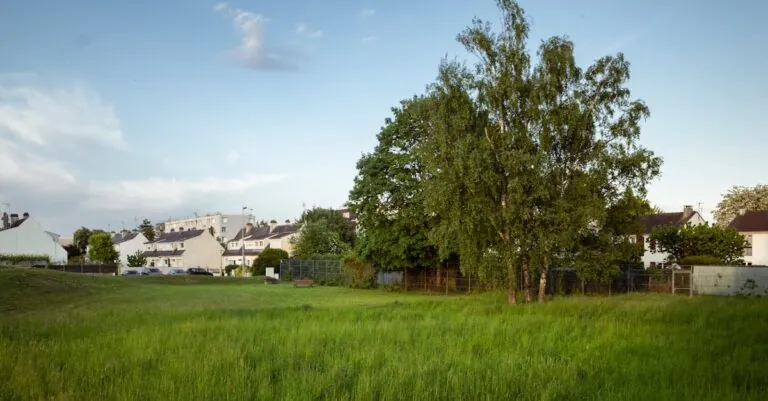The COVID-19 pandemic turned life as we knew it upside down, and the housing market wasn’t spared. As people scrambled to adapt to remote work and social distancing, they also faced the daunting task of finding a home that suited their new reality. Suddenly, homes became offices, classrooms, and even makeshift gyms—all while trying to avoid the dreaded “Zoom fatigue” in the living room.
Table of Contents
ToggleOverview of COVID Impact on State Housing
The COVID-19 pandemic significantly transformed state housing markets. Demand for larger homes surged as families sought spaces suitable for remote work and online schooling. Areas previously considered less desirable gained popularity due to their affordability and available space.
In urban settings, many individuals moved away from densely populated areas to seek suburban and rural locations. Data shows that home sales in suburbs increased by 25% in 2020, while urban sales declined by 17%.
State governments responded to evolving housing needs by implementing policies to support tenants and homeowners. Eviction moratoriums became common, offering temporary relief to those financially affected by the pandemic. Additionally, homeowners found opportunities for refinancing at historically low-interest rates, enhancing affordability.
The demand for rental properties shifted, influencing rental prices. Some cities experienced declines in rental rates, while others saw stable or increasing prices as inventory tightened. Investors actively sought properties, looking for long-term rental opportunities in growing markets.
Homebuyers also faced challenges amid the pandemic. Low inventory led to competitive bidding situations, pushing many buyers to make swift decisions. First-time homebuyers encountered obstacles due to increased prices and reduced available homes listed.
Overall trends indicate a lasting impact on state housing, as preferences and needs evolved. Housing markets may not revert to pre-pandemic patterns, with remote work and lifestyle adjustments likely continuing to shape future demands.
Economic Consequences of COVID on Housing Markets
The COVID-19 pandemic created significant disruptions in housing markets across the United States. It altered property values and rental prices, affecting both buyers and renters.
Decline in Property Values
Some regions experienced declines in property values due to increased unemployment and economic uncertainty. According to a report, urban properties saw a 17% decrease in sales, emphasizing the struggle for homeowners in densely populated areas. Declining valuations motivated many sellers to lower prices to remain competitive. Conversely, suburban areas enjoyed increased demand, prompting a 25% rise in sales, indicating a clear shift in buyer preferences. As families prioritized larger spaces for remote work, this influx of demand impacted property values in suburban regions positively, highlighting a notable transformation in market dynamics.
Changes in Rental Prices
Rental prices fluctuated significantly amid the pandemic’s aftermath. Major cities faced declines in rental costs as vacancies increased, with some urban areas witnessing reductions of up to 10%. In contrast, suburban areas showed price increases driven by higher demand for homes with more space. According to studies, this divergence highlights a growing trend where renters seek affordability outside urban centers. Policies aiding tenants contributed to the evolving rental landscape, as eviction moratoriums provided temporary relief, affecting overall rental trends. Changes in lifestyle preferences further reshaped the rental market, indicating a shift that extends beyond the immediate pandemic effects.
Federal and State Responses
Federal and state responses to COVID-19 significantly shaped housing markets. Various measures aimed to address challenges faced by homeowners and renters alike.
Legislation for Housing Assistance
Legislation introduced during the pandemic offered vital housing assistance. The CARES Act provided over $2 trillion in economic stimulus, which included $25 billion for rental assistance. Emergency funds enabled states to distribute financial aid to struggling renters, ensuring housing stability. Additional support came from local programs promoting access to low-interest loans, helping individuals maintain homeownership amid economic uncertainties. As a result, these legislative measures played a crucial role in safeguarding residents from potential displacement during a tumultuous period.
Moratoriums on Evictions
Moratoriums on evictions became essential during the pandemic. Federal protections under the CDC’s order prevented many landlords from evicting tenants unable to pay rent due to the pandemic’s impact. State-level bans complemented these federal measures, offering additional time for borrowers and renters to obtain assistance. During this period, many states saw a decline in eviction filings by nearly 50%, highlighting the effectiveness of these protections. Eviction moratoriums helped stabilize rental markets while allowing families to remain in their homes, mitigating some of the pandemic’s adverse economic effects.
Long-Term Implications for State Housing
Lasting changes in housing preferences emerged due to the pandemic’s impact. Demand shifted towards larger homes as families required more space for various activities. Suburban and rural areas became increasingly desirable, driven by affordability and the desire for outdoor space. A 25% increase in suburban home sales and a 17% decline in urban sales clearly illustrate this trend.
Shifts in Housing Demand
Homebuyers gravitated toward properties that featured dedicated office spaces and larger backyards. Families preferred homes that offered flexibility for work and leisure. Increased migration from urban centers contributed to this shift as people sought to escape crowded living conditions. Many states experienced rising home prices in suburban regions, reflecting the growing demand. Changes in buyer preferences are expected to persist, influencing construction and zoning regulations over the long term.
Emerging Trends in Remote Work Housing
Remote work significantly affected housing design and functionality. Properties designed for remote work will likely become standard in many markets. Demand for homes equipped with high-speed internet and soundproof rooms is rising rapidly. The need for separate spaces for work and education has increased interest in multipurpose layouts. Additionally, areas with strong community amenities are attracting buyers who value a balanced lifestyle. As remote work continues, adaptation in housing development becomes crucial.
Conclusion
The COVID-19 pandemic has undeniably reshaped the housing landscape across the nation. With a shift towards remote work and the need for multifunctional living spaces, many families are now prioritizing larger homes in suburban and rural areas. This transformation has led to significant changes in buyer preferences and market dynamics.
As remote work remains a fixture in many lives, the demand for homes that cater to these needs is likely to persist. The long-term implications of these trends will influence not just housing prices but also construction practices and zoning regulations. Adapting to this new reality will be essential for stakeholders in the housing market as they navigate the evolving landscape.




